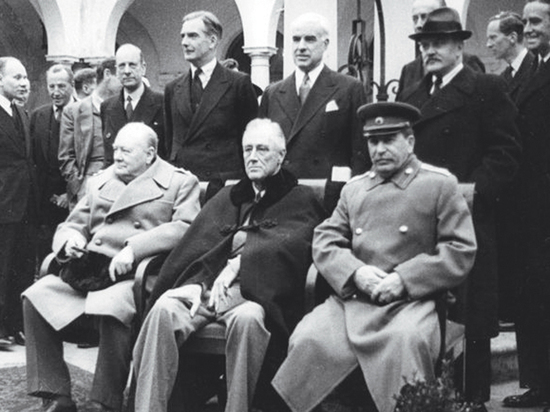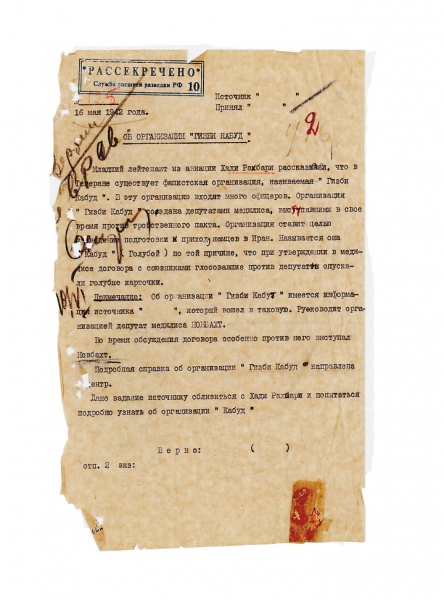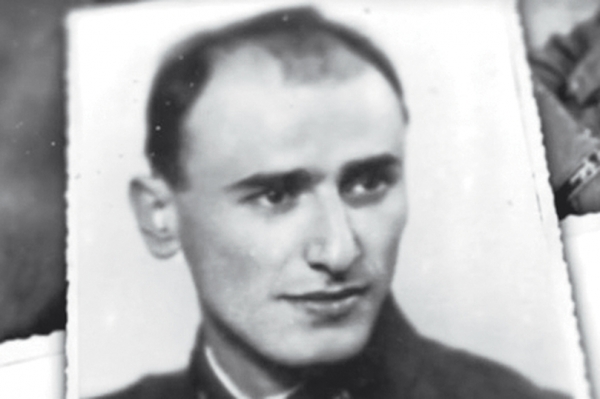Secrets of Operation Approval
At dawn on August 25, 1941 (ie, two months after the outbreak of World War II), the Soviet Union sent troops to Iran to prevent Nazi Germany from taking over the country under your control. control. Fantastic success (lasted less than a week!) An operation called “Consent”, which few people know about.
In front of me are yellowed archive sheets with red spots. Above the inscription “Top Secret”. The scouts inform the center that there is a “Gizbi Kabud” organization in Iran, which means “Blue Party”. She and other similar groups, I quote, “have set themselves the goal of preparing for the arrival of the Germans.” Documents about the battle in Iran during the war between two intelligence services – Russian and German – were only recently declassified by foreign intelligence. And those provided by the Russian SVR specifically for the Ministry of Culture in honor of the 80th anniversary of the agreement with the operation have not yet been published anywhere.

The Tehran conference has become an important phase of merger allies.
From Mussolini and Hitler to “Concord”
This story is not without a preface to explain why Hitler counted on Iranian aid in World War II and why the country was pro-Nazi in the Middle East.
“It all started long before the war began, in 1925,” says intelligence historian Sergei Anatolyevich. – Then there was a palace coup, a new dynasty was established and Persia was declared Iran, which meant “land of the Aryans”. Do you know who was imitated, adored by the Iranian elites? Mussolini! The main founder of Italian fascism was close to them for his ideas about the superiority of some nations over others, about the idea of building a police state. And they took Hitler with even more enthusiasm. Bottom line: Iran and Germany have been working closely together since 1933. In addition, Berlin is placing great bets on a strategic partner. Just one example: Iranian youth and military personnel of all ages were trained in the Third Reich.
On the eve of the outbreak of World War II, Iran began to turn into a kind of “branch” of Nazi Germany. The Germans worked there on all strategically important facilities in the positions of advisers and even leaders. The country became a refuge for German spies who carried out their subversive activities against the USSR.
Aircraft equipment at one of Iran's airports , ready to fly to the USSR. Year 1943.
CITATE
“The Germans from Iran are leading intelligence in the USSR. The Germans “fly” from Iran to the USSR and back like grasshoppers. “
Tehran station to the center. 1941.
The first months of the war showed a strong vulnerability to the use of sea routes leading to the northern ports of the USSR for Allied supplies. Iran, with its ice-free Persian Gulf and railways running its entire territory from south to north, could become and in the future become a strategic route for the supply of arms, ammunition, food, raw materials, fuel and other cargo to the Soviet Union under the Lend-Lease loan. .
There was also a real danger that the entry of German troops from North Africa into Palestine, Syria, Iraq from the south and the Caucasus from the north would be a solved problem for Turkey and Iran's entry into the war on the part of Germany. It was only 150 kilometers from the Iranian border to the oil fields in Baku. Without oil from Baku, the Red Army would not last a month.
– When World War II began, the Iranian government declared its neutrality, – Sergei Anatolyevich continues. – Iranian chess refused to demand that Hitler enter the war against the USSR. But the situation could change at any time – the country's ruling elite and its army sided with Hitler. Soviet intelligence received information about the impending coup d'état.
We are talking about a secret visit by German intelligence chief Admiral Canaris to Tehran in early August 1941 to discuss all the details of such a coup. According to our intelligence, its date was discussed and set – August 28.
Needless to say, the USSR and England could not allow Germany to use Iran? The most interesting is that the USSR had all the legal reasons for this. The fact is that on February 26, 1921, an agreement was concluded between the young Soviet republic and Persia at that time. One of its points is: if third countries are trying to turn Persia into a base for military action against Russia, then the other has the right to send troops to its neighbors.
– Three times the authorities of our country have called on the Iranian leadership to demand that all German citizens who carry out activities “incompatible with neutrality” be expelled, says Sergei Anatolyevich. – No reaction. He rejected Iran and a similar demand from Britain. On August 21, 1941, it was decided to send Allied troops – the USSR and Great Britain – to Iran.
On August 25, at dawn, the operation began. The ambassadors of the USSR and Great Britain handed over a note to Iranian Prime Minister Ali Mansur. It was said that Soviet troops had entered Iran in the north and British troops in the south. When (a few hours later) German Ambassador von Ettel handed Iranian leader Hitler an ultimatum demanding entry into the war with the USSR, he replied: “The situation has changed radically.” A day later, the Iranian government issued an order to end resistance to USSR and British troops. Operation Consent was actually completed on August 29. This means that everything took less than a week.
The introduction of troops of the USSR and Great Britain into Iran was the first joint military-political action of the countries that had just become allies in the war with Germany. In Iran, under the influence of significantly changed geopolitical conditions, interactions and agreements were processed, with the help of which the USSR and Great Britain moved from a long-term confrontation to cooperation, including special services.
“Blue Party” in Iran
“Top secret. Air Lieutenant Hadi Rahbari said in Tehran there is the fascist organization Gizbi Kabud, which includes many officers and was formed by Mejlis deputies who suddenly opposed the tripartite pact … The organization aims to bring Germans to Iran.
It is called “Kabud” (“blue”) because when the agreement with the allies was approved in Mejlis, the deputies who voted against dropped the blue cards. Note: there is information about the organization “Gizbi Kabud” from the source who joined it, the organization is headed by a representative of Mejlis Nonbakht. The task was given to a resource to get closer to Hadi Rahbari and try to learn more about Kabud.
This document has never been published anywhere. Several signatures on the sheet, which is worn on the holes (apparently it has been read so many times), although there is a note that it was made in two copies.
And here is another document that has never seen the light of day:
“11. On May 1942, the day of the pre-arranged meeting, I visited Deputy Nonbakht. He asked me for a report on the work done. I informed him that I already planned to involve 25 construction foremen in the organization where I work.
Nonbakht said it was necessary to speed up their registration, and changed the order of the oath. Namely, a written oath is not required, just an oral oath. Then Nonbakht gave me the following instructions:
1) Identify the political parties in Tehran through the members of the cell. Their composition and activities. In particular, find out about the “Tud” and “Edalet” moods.
2) Establish the residence of British workers, register them and keep track of who will visit their flats, as these places are the center of espionage. Nonbacht said he was particularly wary of the British. Because they have a vague policy in Iran, they are not afraid of the Russians, because their policy is clear. The British are acrobats who lead deceptive politics, they should be careful and be prepared for anything. A few minutes after our conversation, two people unknown to me came in and started talking to Nonbakht about the events at the front. They expressed the view that if the Germans agreed to provide the Turks with Iranian Azerbaijan, Iraq and other areas that were previously part of Turkey, these parties will act on their side and launch an offensive in the Caucasus. In this case, big events are taking place in Iran. “- In 1942 there were no less than 20. The Blue Party became the main one. It was created by a representative of Mejlis Nonbakht (this is how his last name is spelled correctly. – Verification ), who studied in Germany. At one time he translated Hitler's book “Mein Kampf” into Persian. Our intelligence veterans said he was a fanatic of nationalism. A terrible man who was ready to give his life to make his way to Iran for Iran. He was able to recruit about three thousand people to his party. Just to recruit, because it was a conspiracy organization that looked more like an agent network than a party. It consisted of five sections, each with a senior. And only they had the right and the opportunity to contact the leadership of the Blue Party. It was quite difficult to penetrate there, but Soviet intelligence officers managed it successfully. Most importantly, they worked with those party members who could really influence its activities and provide reliable information. By the way, the name of the construction agent who said about the meeting with the deputy is still secret: be careful, his name is not in the declassified document.
There are really “white spaces” in the text exactly where the meaning should be the name.
The Blue Party later became, in fact, part of another party – the Iranian nationalists (Melliyun-Iran). SS Sturmbannführer Richard August, known as Franz Mayer, developed for her not only a program, but all the attributes, including a military uniform (boots, black pants, blue shirt, a emblem similar to the Nazi swastika).

Document declassified in Russian foreign intelligence archives services.
Ford vs. Gravedigger Mayer
The entire German diplomatic mission was expelled from Iran after the operation was approved. This did not mean, however, that the Germans were no longer trying to take over the country. The confrontation between the intelligence services – Soviet and Nazi – in Iran continued until the end of the war.
The “Trash and Drive” (as contemporaries would say) that accompanied this battle would suffice for a series no less interesting than the legendary “Seventeen Moments of Spring.”
I was shown declassified documents about the measures taken by intelligence to “strengthen the KGB's operational work in Iran.” Let us recall that in the difficult war years – from 1939 to 1946 – Pavel Michajlovič Fitin led foreign intelligence. The documents speak of the creation and successful operation of a unique intelligence network in Tehran, led by Ivan Agayants, a legendary figure.

The main station was led by an experienced intelligence officer II Agayants.
Agayants was fluent in French, Turkish, Spanish, Italian, Persian and English. He came to Iran by order of Pavel Fitin in the summer of 1941, when he was only 30 years old. And he came with his wife, who was pregnant at the time, by the way. He worked as a consultant at the USSR embassy in Iran under the pseudonym Ivan Avalov. In fact, he was the station manager.
The main success of “Ford” (under this name it took place in secret documents): a network of agents with at least 400 people. And they are not ordinary people in Iran, but high-ranking wealthy famous people, many of whom have served in military and government facilities. Recruiting any such agent is a real special operation.
Gevork Vartanyan, who worked under Ford, told the MK commentator shortly before his death:
– Agayanti once gave me a task: to check on an Iranian army general who showed that he was ready to help us . But something in this Iranian worried the station manager. We came up with the idea to follow the general under the guise of boys-cyclists. We found out he was printing fakes himself. It was a channel of misinformation.
And the people of “Ford” identified spies who were trained in Iraq for the subsequent transfer to the USSR.
German special services were represented by the headquarters of foreign policy intelligence and military intelligence – the Abwehr. Before the war, they worked under the guise of diplomatic and consular departments as well as companies such as Siemens. The most active and dangerous was SS Sturmbannführer Richard August, aka Franz Mayer (ideologue Melliyun -Iran).
“It was a real talent,” says Sergei Anatolyevich. – He could turn into anyone. When left without contact with Berlin, he posed like a gravedigger in a cemetery!
Thus described Soviet intelligence officers Mayer in their reports to the center: “37 years old, tall, round face, blue eyes, a scar to the left of the eye to the ear, a burn scar on the chest, a ring on the left hand is short . Fluent Persian. A Nazi fanatic, hysterical, fearless, presents himself as a superman. “
Another Nazi fanatic is Major Abwehr Berthold Schulze-Holtus. Prior to agreeing to the operation, he worked in Iran under the “roof” of the German Consulate General in Tabriz. After deporting German diplomats to his homeland, he found a new job … at the Iranian embassy in Sweden. But not for long – Soviet intelligence officers told the Iranian government, otherwise they demanded an “undesirable element” from the Swedish authorities.
– Schulze -Holtus, like Mayer, got into an illegal position, – say in SVR. – He escaped from the Swedish embassy. But he stayed in Iran. Disguised as an Iranian, he grew a beard that dyed henna. Disguised as a mull. And in this form he survived. And he acted. “Mullah” re-established contact with Berlin only with the help of Japanese intelligence, which supplied him with up to five radio stations.
Another document says that a news station in Tehran informs the USSR leadership that the “Melliyun-Iran” created by German intelligence agents Mayer, Hamotta and Schulz is organizing terrorist attacks. At the behest of German intelligence, he conducts espionage and sabotage against the USSR and England. The Soviet government then demanded that the Iranian authorities arrest 167 Melliyun-Iran activists. The materials gathered by our scouts were enough to ensure that the Iranian parties were led by the fascists. As a result, 140 people were arrested. Then came more arrests and more. For the second time, German spies were shamefully expelled from Persia.
The legendary Tehran conference of 1943, at which the leaders of the Big Three were able to discuss joint actions during and after the war. period, largely due to the successful operation “Agreement”.

